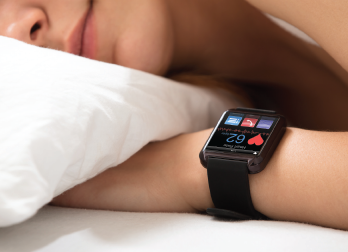
Andrey_Popov / shutterstock.com
SNOWMASS VILLAGE, COLO.—A major workforce shortage, a population of patients taking immunosuppressants where safety concerns and the patient experience are critical, and an increasing focus on remote patient monitoring and telehealth are driving a discussion regarding the role digital wearables play in rheumatologic care.
“We need to be more thoughtful and efficient in taking care of people because we won’t always have the luxury of bringing patients back in three months for medication management simply because it’s time to perform monitoring lab tests,” noted Jeffrey Curtis, MD, MS, MPH, during his presentation on digital health and rheumatology at the 2020 ACR Winter Symposium. Dr. Curtis is the Harbert Ball Professor of Medicine in the Division of Clinical Immunology & Rheumatology, University of Alabama at Birmingham (UAB).
This past year, Dr. Curtis moved to Los Angeles to complete a sabbatical, studying at Cedars-Sinai Medical Center, UCLA, and elsewhere to understand how specialty care professionals treating chronic illnesses, such as diabetes, are applying wearable technology data to improve patient care. For example, digital data reports related to a patient’s mobility obtained from a hospital-provided Fitbit plus a biosensor-equipped knee brace following joint replacement can help inform a healthcare provider much earlier about how well the patient is rehabilitating than if the patient had to wait for a face-to-face appointment.
Dr. Curtis is currently engaged in research at UAB to understand how wearable data can be used to personalize care.
Gathering Meaningful Data
Digital wearable technologies offer value to rheumatology patients and physicians in a number of ways, Dr. Curtis explained. Wearable technologies give patients new opportunities to be more empowered in managing their health and accessing their health data. Access to care can also be increased, and this virtual access can lower healthcare costs. Digital technology that can enable remote health monitoring is particularly important now, given the challenges related to the COVID-19 pandemic patients face in traveling to a physician’s office.
For rheumatologists, wearable data can provide more efficient, accurate information on a patient’s health. Example: The technology can be used to see how frequently and to what intensity a patient has exercised in real time and how well they are sleeping rather than having the patient describe this information in a later appointment.
Collecting data directly from patients via wearable technology can also provide new avenues for research, automating data capture for clinical trials and research studies generating real-world evidence.
Practices that submit data to registries, such as the ACR’s Rheumatology Informatics System for Effectiveness (RISE) registry, may see particular benefit. Given that a substantial amount of care may be delivered outside a rheumatologists’ office, patients can inform the totality of their healthcare experience so their rheumatologist has more complete information. And patient-reported outcomes and other patient-generated health data (e.g. depression, anxiety, flare, medication adherence) can be captured on mobile technology (e.g. by smartphone) and integrated with the electronic health record (EHR) and populate an EHR-based registry.
“The notion that you can get an answer about how to care for the patient in front of you based on data from patients cared for by more than 1,000 physician practices, knowing what they did and then what happened, is exciting to pursue. Wearable technology as a component of this type of integrated data platform has tremendous potential,” said Dr. Curtis.
The key to making wearable data meaningful is understanding how to offer value based on what the data tell us. Dr. Curtis said, “We need to be asking how we can filter data streams to pinpoint what is important and what is actionable. There is a lot of noise in digital data, and we need to focus on the most important signals.” For example, if a wearable device indicates the patient is experiencing a flare, then clinicians can intervene more rapidly to reduce the severity and duration of the flare and, thus, improve outcomes. Even better, we want to build on this approach to predict and potentially prevent a flare in the near future.


